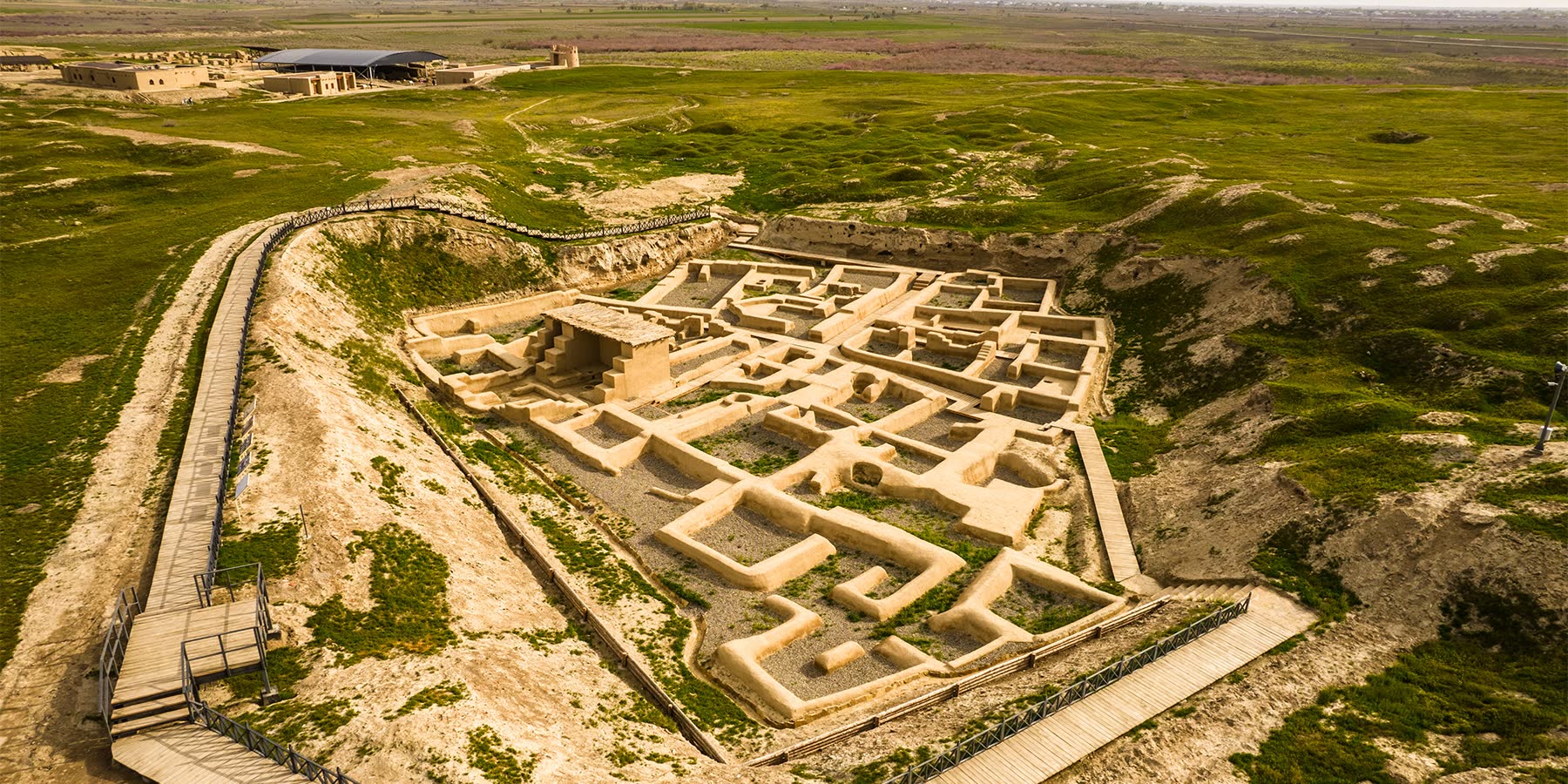Otyrar city ruins
Otyrar, also known as Otrar, is an ancient historical and archaeological site located in southern Kazakhstan. It was once a bustling and influential city along the Silk Road, playing a significant role in the region's history.
Otyrar City Ruins – Unveiling Kazakhstan’s Ancient Silk Road Legacy
Location: Otyrar is situated near the modern city of Turkistan in the southern part of Kazakhstan. It is located along the Syr Darya River, which was a crucial waterway for trade and transport in the region.
Historical Findings: Artifacts discovered at Otyrar have provided insights into the daily life, trade, and culture of the city's inhabitants. These findings have shed light on the city's role in the Silk Road trade and its interactions with various cultures.
Key Figures: Otyrar is associated with historical figures such as Khoja Ahmed Yasawi, the famous Sufi mystic and poet, who was born in the city.
Tourist Attraction: Otyrar has become a popular destination for tourists interested in history and archaeology. Visitors can explore the archaeological site, walk through the ancient city, and learn about its history at on-site museums.
UNESCO World Heritage Status: Otyrar, along with other Silk Road sites in Kazakhstan, has been proposed as a UNESCO World Heritage Site due to its historical and cultural significance.
Otyrar is a testament to the rich history and cultural exchanges that took place along the Silk Road, and it provides a glimpse into the past of this important trade route. It is a valuable site for researchers, historians, and tourists interested in the history and heritage of Central Asia.

🏛️ Overview
The Otyrar City Ruins, also known as Otrar, are among the most significant archaeological sites in Central Asia. Located near the village of Talapty in southern Kazakhstan, Otyrar was a thriving hub on the Great Silk Road, boasting a history that spans over two millennia. The city is renowned as the birthplace of the eminent philosopher and scientist Abu Nasr Al-Farabi and played a crucial role in the cultural and economic exchanges between East and West.
🏙️ Historical Significance
Ancient Origins: Otyrar’s roots trace back to the 1st century AD, evolving into a fortified city with monumental architecture, including palaces, mosques, and bathhouses.
Silk Road Nexus: As a key stop along the Silk Road, Otyrar facilitated trade and cultural interactions between civilizations, contributing to its prosperity and cosmopolitan character.
The Otyrar Catastrophe: In 1218, the city’s governor, Inalchuq, executed members of a Mongol trade caravan, prompting Genghis Khan’s retaliatory siege in 1219. The city endured a five-month siege before falling, marking a pivotal moment in Mongol expansion.
Resilience and Revival: Despite devastation, Otyrar was rebuilt and regained prominence in the 13th century, continuing as a vital trade and cultural center until its decline in the 17th century.
🏺 Archaeological Discoveries
Excavations initiated in 1969 have unearthed:
Fortified Structures: Remnants of the city’s defensive walls, gates, and the central citadel (Ark) showcase its strategic design.
Residential and Public Buildings: Discoveries include homes, marketplaces, bathhouses with advanced heating systems, and religious sites, reflecting the city’s sophisticated urban planning.
Artifacts: Items such as intricately designed ceramics, coins, tools, and an ivory chess piece—possibly linked to Timur—offer insights into daily life and the city’s artistic achievements.
🕌 Cultural and Religious Importance
Birthplace of Al-Farabi: Otyrar is celebrated as the hometown of Al-Farabi, whose philosophical and scientific works significantly influenced Islamic and Western thought.
Arystan Bab Mausoleum: Located approximately 2 km from the ruins, this mausoleum honors the revered Sufi teacher Arystan Bab and remains a pilgrimage site for many.
❓ Why Visit the Otyrar City Ruins?
1. Historical Immersion: Walk through the remnants of a city that once stood at the crossroads of civilizations, offering a tangible connection to the past.
2. Architectural Marvels: Explore the city’s layout, from its fortified walls to residential quarters, showcasing ancient urban planning and construction techniques.
3. Cultural Exploration: Gain insights into the daily lives, trade practices, and spiritual beliefs of a diverse population that thrived centuries ago.
4. Educational Opportunities: Ideal for students, historians, and enthusiasts interested in archaeology, Central Asian history, and Silk Road studies.
5. Scenic and Spiritual Experience: The serene landscape, combined with nearby religious sites, offers both aesthetic pleasure and spiritual reflection.
🚗 How to Get There
By Train: Travel to the Timur railway station near Talapty village, followed by a 10 km taxi ride to the ruins.
By Road: Accessible via taxi or bus from Shymkent (approximately 1.5 hours) or Turkestan (approximately 30 minutes).
The Otyrar City Ruins stand as a testament to Kazakhstan’s rich historical tapestry, offering visitors a unique opportunity to delve into the past and experience the legacy of a once-thriving Silk Road metropolis.
RELATED DESTINATIONS
Discover the Mausoleum of Khoja Ahmed Yasawi in Turkistan—UNESCO site, Islamic architectural gem, and key pilgrimage spot in Central Asia.
Uncover Sauran Fortress in southern Kazakhstan—Silk Road stronghold with medieval ruins, ancient defenses, and rich Turkic cultural heritage.
Visit the Mausoleum of Arystan Bab in Kazakhstan—an important pilgrimage site known for its spiritual legacy, unique architecture, and sacred history.


